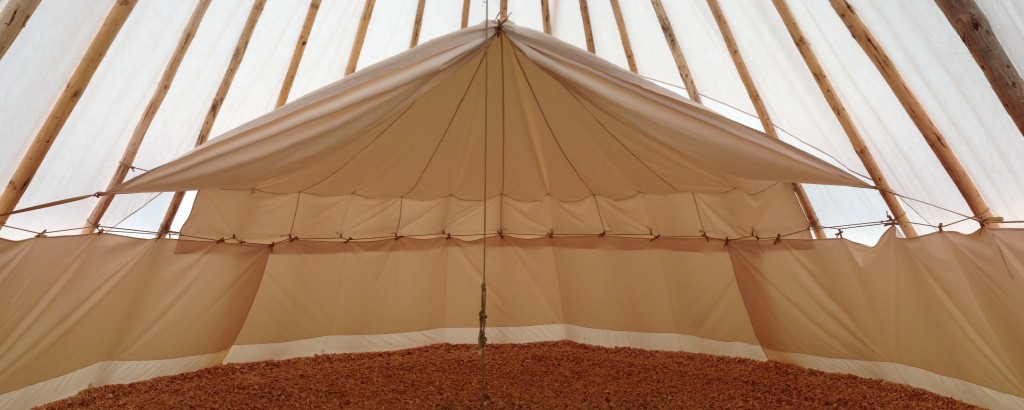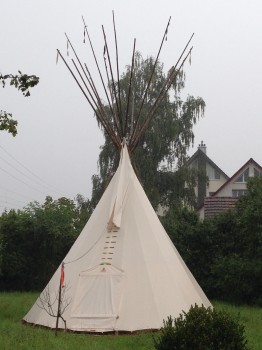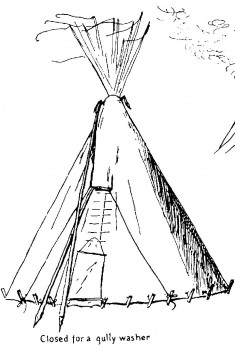TIPI AND WATER
Rain is uncomfortable for most people, especially if they get wet. To stay dry in a tepee, a lining is included. As optimizing rain protection can additionally one Ozan (heaven) is used, which completely covers the rear part (sleeping area).
KEEP DRAIN POINTS
The rainwater gets inside through the smoke flap opening and usually runs down the poles and behind the lining. Sometimes, however, small bumps in the bars can collect the water and so-called drainage points form at these points. These bumps can be smoothed out on the bars with a little sandpaper.
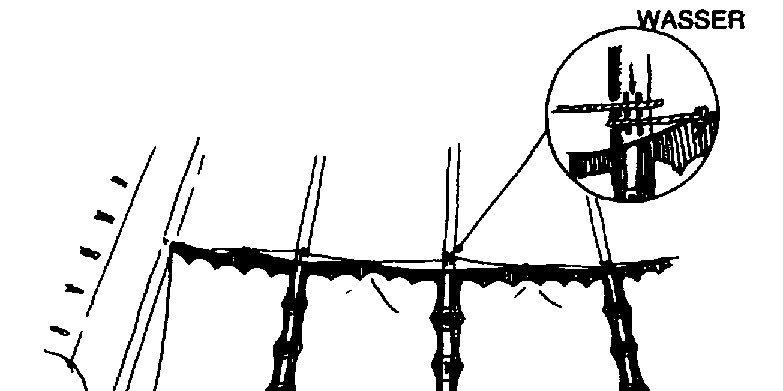
Drip spots could also form on the upper Linig rope. The rope soaks up with water and when saturated, it no longer runs after the rods as it should, but begins to drip inside. To prevent these drops from forming, we simply put two small pieces of wood under the rope (see illustration). With this technique, a “bridge” is formed and the water can flow down the bar again unhindered. Maybe only two sticks, as shown above, that serve as a water ladder are enough. The aim is always to somehow bring the drainage point behind the lining.
THE SPIDER METHOD
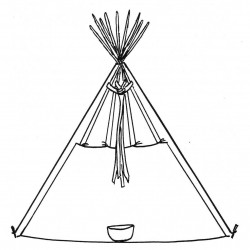
As a further method against moisture in the tent, we can attach a "spider". Cotton cords or, better still, thick wool cords are tied to all poles. These are all tied together in a bundle or knot high above the fireplace. We just let the ends hang down in the fireplace or in a vessel. Wool has the property that it can soak up water very well and burns badly. The “spider” pulls the rainwater off the bars and directs it to the desired location.
WITH STRONG RAIN
If heavy pouring rain is expected, or if we are not going to stay in the tipi for a long time, we can close the smoke flaps over the opening. This is how we prevent rain from entering the tent in our absence. The smoke flaps are put together in such a way (Fig. 1) that the upper tips touch. In this position the air can circulate and the little water that enters through the smoke flap opening only falls into or just behind the fireplace, where it does no damage. The smoke flaps can be closed completely in an emergency (Fig. 2). To do this, one flap is pulled down and the other is firmly placed across it.
